![]()
![]()
![]()
Use LEFT and RIGHT arrow keys to navigate between flashcards;
Use UP and DOWN arrow keys to flip the card;
H to show hint;
A reads text to speech;
22 Cards in this Set
- Front
- Back
- 3rd side (hint)
|
Aracae
|
Large leaved monocots
Often epiphytes or bole climbers, some terrestrial Berry fruit Leaves cause inflammation of throat (Ca Oxalate) Shopping mall/dentist plant leaves simple, alternate no stipules clasping or sheathing petiole base Leaves arise from a scrambling rhizome, with adventitious roots SPADIX (flower) SURROUNDED BY SPATHE (bracht |
Uses:
-Ornamental -Potato-like tubers consumed -young leaves of Anthurium are stir-fried and eaten in Hondurus Species: Anthurium:large marginal collecting vein (collect water), reticulate net-like venation, and spathe that folds back Philodendron: no marginal collecting leaf, lateral veins parallel Monstera: similar to Anthurium, swiss cheese holes, spade falls off early Xanthosomoa: triangular leaves Dracontium |
|
|
Arecaceae [Palmae]
|
Often emergent trees or shrubs, characteristic and distinctive element of tropical forests (coconuts).
Easy to key to family. Stems are pithy in the middle and often ringed. LEAVES LARGE, are parallel-veined, often palmately or pinnately compound. alternate. palmate hastula (raised triangular projection between petiole apex and leaf blade) Flowers 3-merous, inflorescnece huge and covered by brachts species sometimes monocarpic (flowers once in lifetime no stipules no branches stilt roots common sometimes trunk and/or leaves armed with prickles fruit a drupe, often fibrous, hard nut-like seed Distribution: worlwide, tropical, sub-tropical, warm-temperate. most abundant in wet areas. |
Use: Leaes use for thatching
Stems for contruction fruit for food (ddates, heart of palm, coconuts) oil (African palm oil) |
|
|
Bromiliaceae (Pineapple family)
|
Leaves arranged in spiral rosette (serves as water holding tank) - own microsystem (litter and deadcritters decompose and provide nutrients
Most are epiphytic with adventatious roots. leafs simple, alternate and spirally arranged, strap like and stiff no stipules flowers are showy, subtended by brachts inflorescence variable (often pink/red, hummingbird pollinated) veins parallel; trichomes present Present in New World tropic and temperate zones. Mostly wet areas, like cloud forest, but also in desert |
Food (pineapple), fiber, ornamental
Genera: Tilandsia (US), Ananas (pineapple), bromelia, aechmea |
|
|
Clusiaceae (Guttiferae)
|
Opposite, simple, thick, leathery leaves with copious latex - sometimes yellow or orange. no stipules
secondary veins sometimes close, hard to see mostly trees and shrubs, also hemi-epihhytes. thinner leaved ones have pellucid dots on their leaves. dioecious (male and female plants) stilt roots fleshy yellow flowers fleshy fruit (berry/drupe) |
Tropical in all elevations, less common in dry forest.
Ue: some fruit edible (mangosteeen), timber, St. John's wort Genera: Clusia: fleshy, obovate leaves with rounded apex. latex white or yellow. Genera: Hypericum |
|
|
Costaceae (spiral gingers)
|
previously in true ginger family.
simple large leaved monocots with spiral-staircase leaf arrangement with closed leaf sheath. alternate. congested spike inflorescence with strongly overlapping imbricate and brightly colored brachts herbacious with large elliptical leaves. leaves hairy.. |
Pan tropical, mostly lowland forest, introduced in Asia and Costa Rica.
Use: ornamental Genera: Costus |
|
|
Cyclanthaceae
|
herbacious plants and shrubs. CONFUSED WITH PALMS, BUT STEMLESS when terrestrial.
more sharply decending veins. More palmate-venation than palms. simple, alternate BIFED (2-CLEFT, AS IN HOOF) most are ephiphytes and hemi-epiphytes, also stemless terrestrials flower/fruit on spadix, flowers often four-sided, look like pastry berry fruit ditribution: tropical lowloand and cloud forest. wet lands only |
use: ornamental
genera: Asplundia: terristrial/epiphitic, bifid (most important) cyclanthus arludovica |
|
|
Heliconiaceae (heliconia)
|
banana-like. large leaves. leaf BASE ASYMMETRICAL.
BRIGHT RED AND YELLOW BRACTS SUBTENDING FLOWERS leaves imple, alternate, no stipules. open leaf sheaths. VEINS PERPENDICULAR TO MIDRIB - TEAR EASILY small to giant herbaceous monocots. glabrous Lacking pulvinis inflorescence pendent (hanging) or erect for hummmingbirds |
American tropics, lowland wet forrest
Ue: Ornamental Genus: Heliconia |
|
|
Marantaceae (prayer plant)
|
LIKE HELICONIACEAE, BUT S-SHAPED VENATION AND PULVINOR AREA. TINY CROSS VEINS PREVENT LEAF FROM TEARING.
simple alternae no stipules Ligular flap Herbacious Inflorescence like Heliconia, except Calathea with spiral spike-like or flattened rattlesnake Tropical, mostly wet lowland |
Use: Ornamental
Genus: Maranta, Calathea |
|
|
Melastomaceae
|
1-4 PAIRS OF VEINS ARCUATELY PARALLEL TO MIDVEIN AND CROSS VEINS PERPENDICULAR TO MIDVEIN (LADDER-LIKE). ALSO, OPPOSITE LEAVES.
leaf margins may be entire or toothed, leaves glaborous or pubescent. flowers have distinctive "bent anthers" for buzz pollination Distribution: worldwide, tropical or sub, wet, all elevations but most in lowlands simple leaves, no stipules. mostl shrubs and small trees, some herbs and large trees. Cloud forest/secondary forest common |
use: ornamental, used for dyes
Genera: Miconia, Conostegia, Clidemia |
|
|
Moraceae
|
Fig family
SHEATHING STIPULE FALLS OFF AND LEAVES A SCAR AROUND TWIG, MILKY LATEX. SECONDARY VENATION ON UNDERSIDE PALE, RAISED, LOOP JOINTED simple entire leaves, alternate emergent trees, hemi-epiphytes, herbs. some stilt roots. Distribution: Worldwide, tropical to sub, wet and dry |
Genera: Ficus: Tree strangler
Use: Food (figs- ficus, breadfruit-Artocarpus), medicinal, ornamental, some timber. rubber from latex of Castilla elastica. Genera: Ficus: hemi-epiphytic stranglers, circular stipular scar, leaves 3-veined at base, latex. Syconium inforescence and fruit. Castilla elastica: lowland wet forest, gently curving branches, milky latex Brosimum, Naucleopsis, Dorstenia |
|
|
Myrtaceae
|
PUNCTUATIONS (CLEAR DOTS ON LEAVES FOR OIL), SPICY, SWEET ODOR WHEN CRUSHED. NO LATEX.
bark reddish or light and peeling off in flakes. Myrtle family Distribution: worldwide, tropics and warm temperate Old-world: alternate leaf; Neotropical: opposite flowers with many stamens. flowers sometimes drupes Distribution: Wordwide, tropical to sub, wet and dry |
Use: Food (Guava - psidium guajava, cas, feijoa, cloves, allspice), medicinal, ornamental, some timber
baseball-sized yellow fruits Eugenia: species-rich, edible fruit Eucalyptus: timber and ornamental |
|
|
Orchidaceae
|
PSEUDO BULB (SWOLLEN ABOVE-GROUND BULBLIKE STEM), WHITIsH ROOTS. FLOWERS 3-MEROUS WITH ONE PETAL MODIFIED INTO LIP. MODIFIED ANDROCIUM AND GYNOECIUM INTO A COLUMN
Second in size. Larget monocot family. most diverse. Epiphytic and some hemi- and terretrial. leaves entire, strap like and leathery or succulent, sometimes petiole simple, alternate, basal shealthing, no stipules, |
Use: food -s vanilla, ornamental
|
|
|
Passifloraceae
|
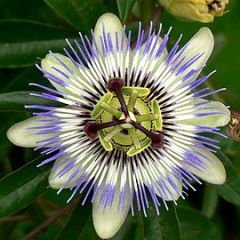
AXILLARY TENDRILS AT 45 DEG ANGLE. PETIOLAR GLANDS. FLOWERS 5-MEROUS, LARGE, FLAT, CORONA
fruit: berry or capsule often petiolar glands or nectaries lIanas and vines but some shrubs and trees leaves simple, alternate, |
Passiflora: most important. Vines and lianas. tendrils and flower.
|
|
|
Piperaceae
|

FLOWERS: SPADIX WITHOUT SPATHE (tiny white flowers or green/black fruits (bat dispersed)), SWOLLEN NODES (JOINTED), PEPPERY SMELL TO LEAVES. LEAF BASE ASYMMETRICAL
simple, alternate, entire, somtimes toothed zig-zag branching. SOMETIMES SYMBIOTIC ANTS LIVING IN PETIOLE. leaves sometimes fleshy, stilt roots. shrubs, herbs, or epiphytes. |
Black pepper, medicinal
Piper: peppery and asymmetric, spicate peperomia: succulent, epiphytic herbs w.o odor Pothomorphe: branched inflorescence and palmately eined |
|
|
Rubiaceae
|
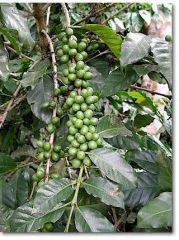
INTERPETIOLAR TIPULES (fall off early, so look at young shoots) OPPOSITE ENTIRE LEAVES. STIPULE SCAR.
herbs, shrub,s small trees. flower with tubular corolla. berry fruit |
Coffee (coffea arabica), ornamental.
|
|
|
Rutaceae
|

GLANDULAR PUNCTATE, CITRUS AROMA. MANY SPECIES HAE SPINES
cosmopolitan herbs to trees. variety. |
Citrus family
Use: agriculture (orange, limes, grapefruit), lumber Genera: Citrus: Punctuation, citrus, winged petioles, fruit Zanthoxylurn: pinnately compound leaves and prickles on trunks. margins serrate |
|
|
Solanaceae
|
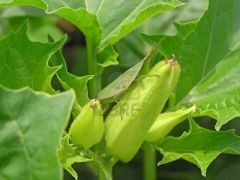
LEAVES HAVE TOMATO-LIKE SMELL OR STRONG RANK ODOR WHEN CRUSHED. ALSO, DEEP LOBES OR TEETH. FLOWERS 5-MEROUS, pleated. HAIRY WITH PRICKLES.
sometimes small leaf at petiole alternate leaves. herbs to trees. |
Chiles (Capsicum), tob
acco (nicotiana) Tomato/potato/egglant (solanum), medicinal uses |
|
|
Urticaceae
|
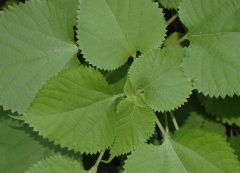
PROMINENT HAIRS (ESPECIALLY IF TING!), CRENNATE-SERRATE LEAF MARGINS, 3-VEINED LEAVES. ALSO CECROPIA
flowers green/brown/white. herbs, shrubs, trees, lianas |
source of fiber
Pilea: non-tinging Urtica: nettle genus with opposite leaves (nettle family) |
|
|
Urticaceae/"Cecropiaceae"
|
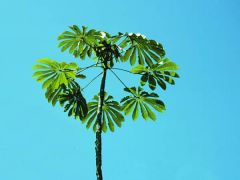
trees on roadsides. TREES. FORM SYMBIOTIC ASOCIATION WITH ANT COLONIES THAT INHABIT THEIR INTERNODES (CECROPIA ONLY) AND DEFEND PLANT FROM HERBIVORES IN EXCHANGE FOR FOOD BODIES AT THE BASE OF PETIOLES. LATEX. DENSE PARALLEL SECONDARY VEINS. CIRCULAR TIPULE SCAR. LEAVES WHITE WAXY BELOW. DEEPLY LOBED.
hooped, hollow trunk. stilt roots. pendulent inflourescence. |
Important in forest succession (fruit eaten by >80 species)
Cecropia: leaf base peltate (petiole attachd towards center of leaf) Pourouma- used as sand paper Coussapoa- non-lobed, dark, wtick, strangling hemi-epiphytes |
|
|
Zingiberaceae
|
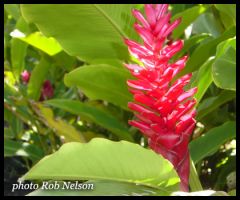
LARGE LEAVED MONOCOTS. VEINS STRONGLY ASCENDING.
2-RANKED.. STRONG SWEET GINGER-LIKE ODOR. LEAVES GLABROUS. BRIGHT BRACTS |
Ginger family: SPICE, MEDICINAL, ORNAMENTAL.
|
|
|
Asteraceae [Compositae]
|
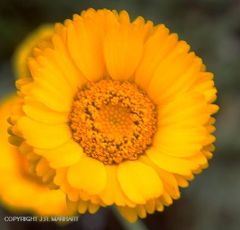
SUNFLOWER TYPE INFLORECENCE CALLED HEAD OR CAPITULUM. some have latex. mostly herbs and shrubs. Achene fruit.
|
cosmopolitan, esp on clearings and forest edge.
medicinal, ornamental, artichokes and sunflower seeds, chamomile tea sunflower family |
|
|
Rosaceae
|
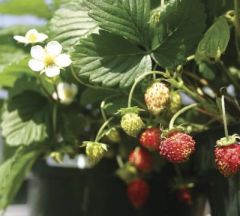
SERRATE LEAF OR LEAFLET, PRICKLES ON STEMS AND PETIOLES, 5-MEROUS FLOWER, FLAT
herbs, shrubs, vines. herbs have comopund, vines are simple. |
temperate cosmopolitan, cloud forest.
Use: fruit and ornament. Rose (Rosa), apple, blackberry and raspberries (Rubus), Strawberries (fragaria), plum (Prunus) Rubus: trifoliolate shrubby vine |

